Synopsis of two ‘hard fun’ facilitation techniques
Suitable for:
- new product development
- team building
- strategy
- retrospective
- partnership development
- and more!
![]()
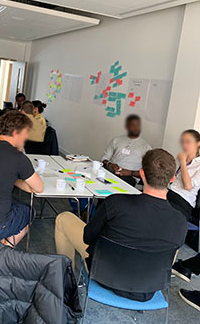 Design Thinking facilitation achieves ‘hard fun’ by tapping into empathy, detective work, and creativity to solve problems. The design thinking process is based around human factors, such as functional, social or emotional.
Design Thinking facilitation achieves ‘hard fun’ by tapping into empathy, detective work, and creativity to solve problems. The design thinking process is based around human factors, such as functional, social or emotional.
When we understand a problem using empathy, and look at it from different perspectives, we often get useful and surprising insights. Those insights, combined with the wisdom of the group, inform more productive idea generation and result in ideas that can be prototyped and tested.
I apply design thinking to facilitation using a four step process:
– collect ideas about the challenge you’re facing.
– choose a direction to pursue in the rest of the session
– create possible solutions through ideation, and
– commit to the most promising ones, for example through prototyping or testing
There are dozens of exercises and techniques for each of these steps, allowing customisation of each session.
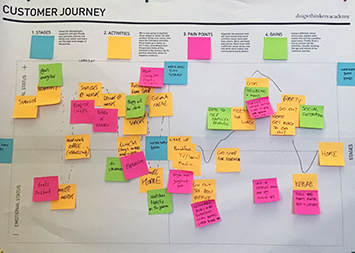
I combine these steps with ways of working that help get 100% participation and support people to move out of their comfort zones to new ideas.
In addition to coming up with new and sometimes transformative ideas, design thinking can also help people see ways to tell stories that support change.
![]()
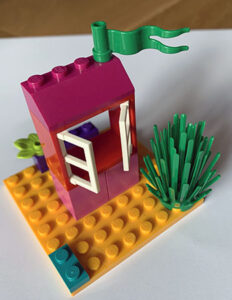 LSP is a highly facilitated process where participants build models using lego bricks as a way to explore challenges or opportunities at work. LSP also has a four step process:
LSP is a highly facilitated process where participants build models using lego bricks as a way to explore challenges or opportunities at work. LSP also has a four step process:
– The facilitator poses a question
– Everybody builds a model in response to the question
– Everybody shares the story of their model
– Everybody learns and improves their understanding, putting them in a better position to take the next step, for example, designing new offers, agreeing a vision or strategy, or revising a process.
The method ensures that everyone participates evenly, and ‘thinking with your hands’ unlocks creativity that is otherwise untapped. It involves all learning styles and creates a safe space, since challenges and struggles are mediated by the models.
LSP is based on the science of learning and play, which helps social bonding, unlocks creativity and insights for problem solving. The first steps of LSP are individual model building, but building shared models and systems of models also help groups find creative ways to adapt to complex and changing environments.
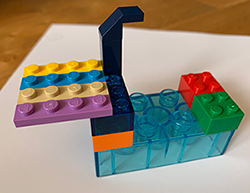 Part of the magic of LSP is the use of metaphor. The bricks can mean anything the model-builder wants. In the model with the blue transparent base, the red and green bricks can represent ‘stop’ and ‘go’ decisions in a work flow, or love (red) for the environment (green). Or the colors aren’t significant and the bricks represent two different work groups.
Part of the magic of LSP is the use of metaphor. The bricks can mean anything the model-builder wants. In the model with the blue transparent base, the red and green bricks can represent ‘stop’ and ‘go’ decisions in a work flow, or love (red) for the environment (green). Or the colors aren’t significant and the bricks represent two different work groups.
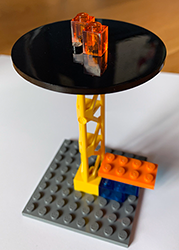 The model with the black circle top could represent space travel, an education system, or a new digital product. Metaphor empowers model-builders to tell vivid stories about challenges, opportunities, and solutions.
The model with the black circle top could represent space travel, an education system, or a new digital product. Metaphor empowers model-builders to tell vivid stories about challenges, opportunities, and solutions.
Get the Rogue & Wye booklet that walks you through three core elements of successful ‘design thinking’ facilitation.
Rogue & Wye’s ‘How To’ Facilitation Booklet
Thank you!

